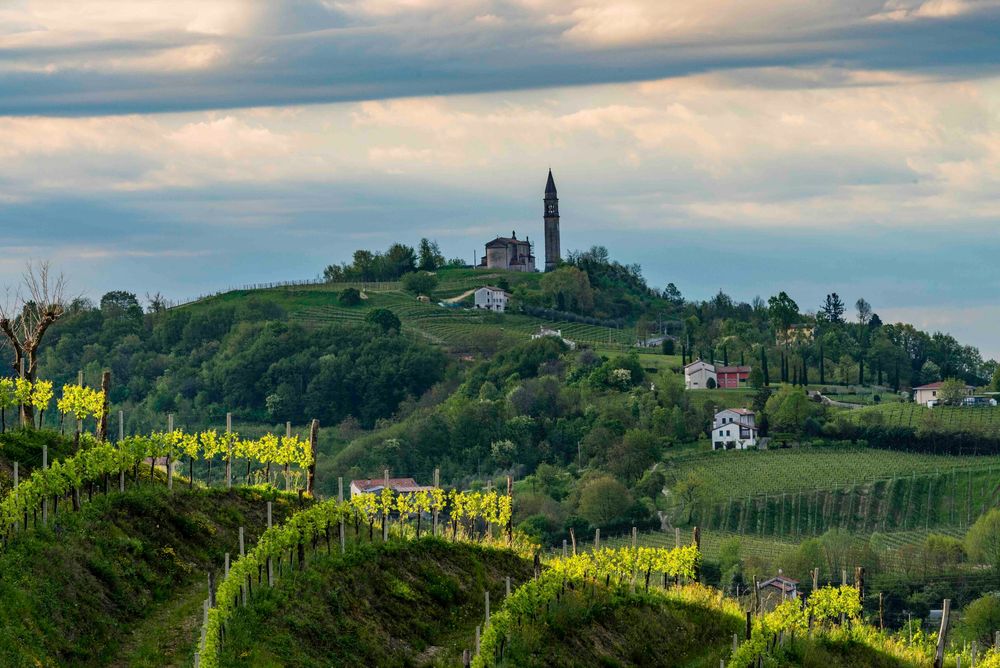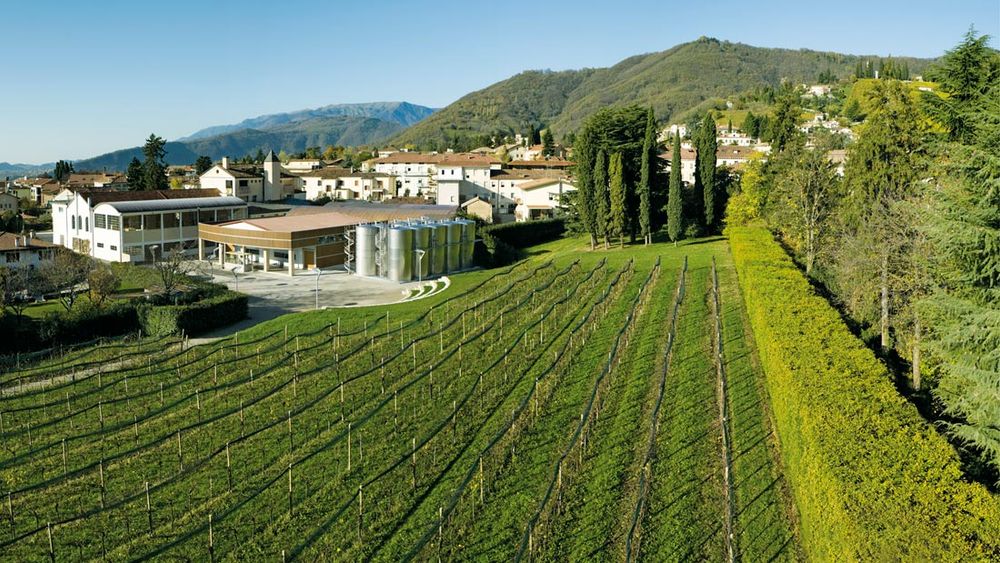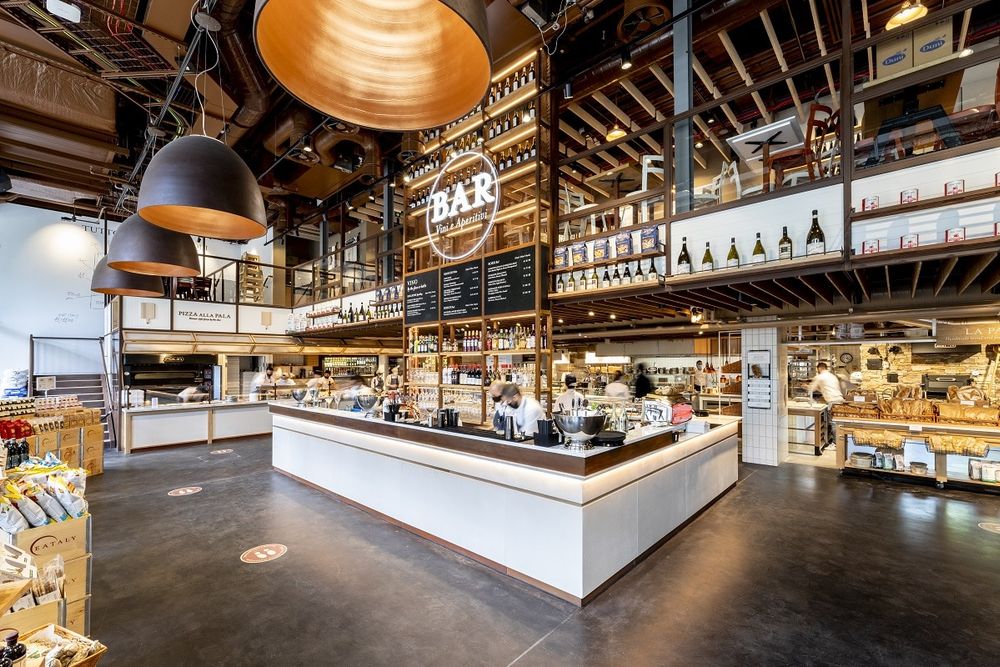The push to drive more DOCG Prosecco into a wider number of markets, combined with increased organic production are just two of the key objectives of Elvira Maria Bortolomiol as she takes on the presidency of the Prosecco Consorzio.
Well done on your new role – can I ask why you put yourself forward to be president and what it means to you to be elected?
I am very proud to hold this position and the responsibility that comes with it. It’s also an opportunity to make a direct contribution at Denomination level to the region. That’s what encourages me and fills me with enthusiasm to be able to represent our product and our territory and promote its values, quality and authority in the world.
What does it mean to you to be a female to be chosen for this role for the first time?
I became a member of the board of directors of the Consortium Conegliano Valdobbiadene Prosecco Superiore in 2007 and for several terms held the position of vice president, the first woman in the role. I believe that gender, male or female, makes no difference, what counts is the passion for the territory and the commitment to strengthen the value of the Denomination.
What are going to be your main objectives that you would like to deliver in the first year?

The opportunities are there to capitalise on the Prosecco’s new found status as a Unesco World Heritage site
First of all, the harvest awaits us. Then, in the medium-short term, and in the hope that the global situation will improve, we look forward to bringing the Consortium back to the place where we can promote our Proseccos both in Italy and abroad. Trade fairs, but also events for professionals and consumers are a fundamental aspect on what we do and we are keen to get back to work.
Tell us about your own winery – Bortolomiol – that you run with your sisters – in terms of size and the styles of Prosecco you produce?

Elvira Maria Bortolomiol runs her own winery with her sisters
Bortolomiol SpA was founded in 1949 by Giuliano Bortolomiol, one of the 11 founding members of the Consortium. Giuliano, a graduate of the Conegliano School of Enology, was the first to create a Prosecco Brut. The Bortolomiol winery is located in Valdobbiadene, in the heart of the Conegliano Valdobbiadene Prosecco Superiore DOCG area.
Today the winery is run by my sisters and I, an all-female team who carry on the family tradition with commitment and passion, continuously investing in production innovation and focusing on sustainable projects that safeguard man and the land.
In recent years, Bortolomiol has undertaken a sustainable agriculture project to safeguard the rural heritage of this area, which is recognised as a UNESCO World Heritage Site. We now have five hectares of organically cultivated vineyards from which we produce our organic wine, Ius Naturae Valdobbiadene Prosecco Superiore DOCG. This was the first wine in the world to obtain the Environmental Product Declaration (EPD), currently the only internationally recognised certification of environmental sustainability. It helps define the rules that will be adopted by all wineries around the world that wish to obtain this certificate.
What have been the biggest and most important changes you have seen in the region during your career?
The appellation has developed considerably in recent decades. In particular, 2009 marked a turning point with the recognition of the DOCG for the Conegliano Valdobbiadene area and the general reorganisation of the Prosecco world, with the creation of DOC Prosecco and DOCG Asolo.
Over the last 10 years, Conegliano Valdobbiadene Prosecco Superiore has grown both in terms of production, reaching 92 million bottles, and in terms of its success on international markets: today it is exported to 180 countries around the world. In addition, the leading role of the Consortium plays in promoting sustainable viticulture in the area with regard to the environment and citizens has been increasingly strengthened, with the achievement of various results, such as the elimination of glyphosate, which has made Conegliano Valdobbiadene the largest agricultural area in Europe where this product is not used. The Unesco recognition has also recognised the universal value of our territory, bringing it into the spotlight of an international audience.

Valdobbiadene, loc San Pietro di Barbozza
What do you see as the biggest untapped opportunities and potential for the Prosecco region that you hope to be able to help it achieve?
Our territory was recognised as a UNESCO World Heritage Site in 2019 and we immediately saw the impact of that in the following months with a significant increase in tourist numbers in the second half of the year – up 13% compared to 2018.
Once the travel restrictions, due to Covid, are lifted, I believe the tourism potential of the region can be further utilised. On the leisure tourism front, the Conegliano Valdobbiadene area has all the credentials to be one of the most sought-after destinations for international tourism, offering outdoor experiences, a wide and varied gastronomic culture, fascinating villages and historic centres to discover for cultural tourism.
What are the biggest challenges you need to guard against and be on top of?
The main challenge in the next few years will be to increase the value of the product, in order to give the right remuneration to those who undertake the heroic, manual viticulture, which in our area requires 600 to 800 hours of man hours per hectare per year. In this sense, a new marketing campaign will be fundamental to communicate the differences and the value of Conegliano Valdobbiadene Prosecco Superiore DOCG to both Italian and foreign consumers. Another challenge is sustainability, and we will be working hard to to achieve environmental certification for the entire region and increase our organic production.
Where do you see the biggest growth opportunities for Prosecco – more premium Prosecco?
I believe having a diverse range of product is the key to a winning strategy and being able to increase the overall value of Conegliano Valdobbiadene Prosecco Superiore in the future. This process of differentiation began in 2009 with the creation of the Rive typology, which identifies wines from 43 localities – individual municipalities or hamlets – within our territory. These are territorial selections whose value has been deepened with the publication of an in-depth zoning study of the Denomination, The Terroirs of Conegliano Valdobbiadene Prosecco Superiore, edited by Diego Tomasi and Federica Gaiotti, researchers at the CREA in Conegliano.

Eataly in London is one of a number of premium outlets that is championing the diversity of Prosecco
Production of this type of wine currently stands at around 2 million bottles and interest is growing. Proof of this is that Eataly, in its new store in London, has decided to dedicate a shelf to these selections.
How do you achieve that growth?
In addition to communicating the specificities that distinguish the Denomination, we hope to soon be able to welcome journalists and opinion leaders from all over the world to our hills once again. We believe that an in person visit to our Denomination is the best way to grasp its essence and its distinctive elements, starting with the territory, characterised by an extraordinary vocation for wine-growing; the sparkling wine culture, rooted and widespread in the area thanks to the presence of the Scuola Enologica di Conegliano, the first to be founded in Italy, in 1876; and finally a community of producers, who for centuries have looked after the territory, handing down know-how and passion for wine-growing from generation to generation.
What do you see as being the best ways to communicate premium Prosecco – how do you balance what you can do in person with what you can do online/ social media and above the line?
I believe that communication both above and below the line is important, in a complementary way. Communication campaigns, both through the mass media and social media, make it possible to reach a large audience and increase the knowledge and awareness of our product. They can be useful especially in Italy, our main market, where there is already widespread knowledge of our wine among consumers.
Below-the-line activities allow us to go deeper and more effectively convey the value elements that are distinctive of our Denomination. They are important both in Italy and abroad, to reach influencers and opinion leaders, who have a decisive role in guiding trends and directing consumer tastes.
What steps do you hope being taken to improve the environmental impact and sustainability of the region?
The Consorzio di Tutela has been committed for years to raising the awareness of its members and the entire region towards a more sustainable relationship between man’s work and the environment. Since the first edition of the Viticulture Protocol in 2011, important goals have been achieved. We started with the gradual elimination of many products that have too great an impact on the environment, including the elimination of glyphosate in all 15 municipalities of the Denomination for all types of cultivation. Woodland areas are being protected in order to maintain a proper balance between agriculture and woodland and thus promote the biodiversity of the land and the vineyard itself. All these practices will continue. The new objective will be to achieve environmental certification of the area and work to increase the number of hectares under organic cultivation.

Biodiversity and organic production is key to Prosecco’s development
Which markets around the world do you see as being the fastest growing in the next five years?
Our latest export figures show great growth in Scandinavian markets (over 50% in both volume and value) and outside Europe it is Japan that is leading the growth trend for our wines in the Far East, with an increase of over 200%. Outside Europe, Russia and Oceania have also recorded excellent performances in recent years, and offer good growth potential for the future.
What are your most influential markets to be in and why?
The most important strategic markets for our denomination are the UK and the US. As far as the UK is concerned, this has seen exponential growth since 2003, when we started monitoring exports of our wine, and in 2019 it became the top export market for Conegliano Valdobbiadene Prosecco Superiore DOCG.
The United States represents the first market outside Europe for our Denomination and the first market in the world for wine trade, able to dictate consumption trends internationally.
Historical markets for our Denomination, which have always played a very important role in exports, are the German-speaking countries: firstly Germany and then Switzerland and Austria.
































